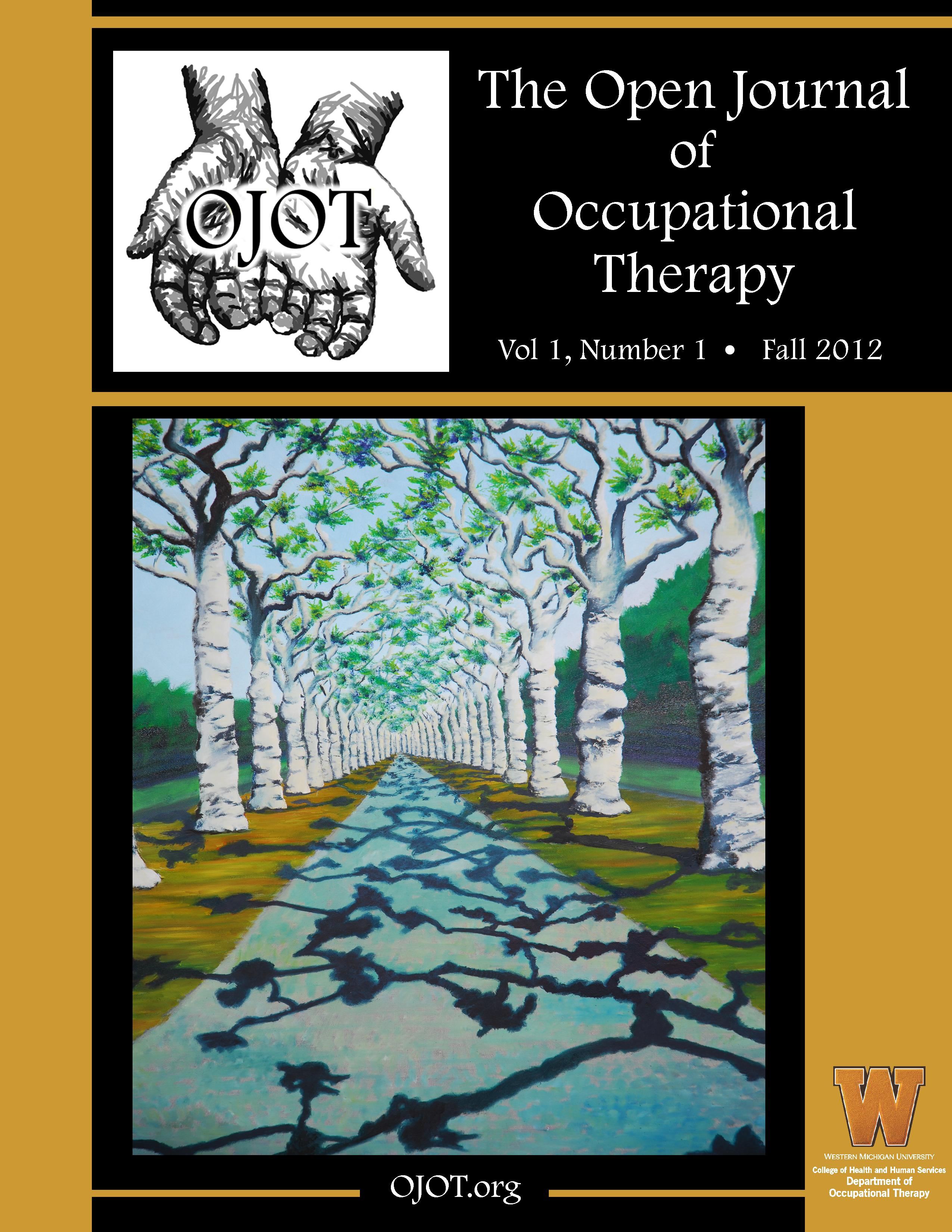ScholarWorks > HHS > OT > OJOT > Vol. 1 > Iss. 1 (2012)
Credentials Display
Rondalyn Varney Whitney, Ph.D., OT/LHeather Miller-Kuhaneck, Ph.D., OTR/L, FAOTA
Abstract
Changes in the soon to be released Diagnostic Statistical Manual (DSM) – 5 (American Psychiatric Association, 2012) bring new opportunities for occupational therapy, but the profession must prepare for the impact these changes forecast. While well positioned to capitalize on newly defined specifications of Autism Spectrum Disorders (ASD) and the elevation of sensory processing difficulties to a core feature of the disorder, the profession must be alert to the potential downside of the pending changes. The more stringent diagnostic rubric will likely exclude a significant number of individuals currently eligible for therapeutic and academic services. Autism will be defined as a neurodevelopmental disorder that must be identifiable before early childhood (age 5), even if it is not detected until later as a result of environmental factors (minimal social demands, support from caretakers, etc.). The new diagnostic criteria will add the explicit recognition of sensory behaviors within a subdomain of stereotyped motor, verbal, and sensory-based behaviors and researchers suggest only 60% of those who currently meet the threshold for an autism spectrum diagnosis will continue to meet criteria under the new categorization. The proposed changes will likely encourage researchers to use greater specificity when recruiting sample populations and, as a result, help to determine interventions that are most advantageous for specific subtypes. Addressing sensory processing in the diagnostic criteria may authorize interventions aimed specifically towards reduction of sensory-related disabilities through remediation, environmental support, or parent education while simultaneously calling upon us to deliver evidence for Ayres’ sensory integration® (ASI) approaches. The change also presents an urgent call to our profession to promote the unique scientific contributions occupational therapy makes for individuals with ASD, their families, and their educational contexts both including and in addition to the use of ASI approaches. These changes to the manual used by the psychological community for diagnosis offer occupational therapists an opportunity to emerge as the recognized leaders in the diagnosis and intervention of sensory processing disorders/dyspraxia. The issue is, then, how can the profession of occupational therapy clearly articulate our role and our knowledge to stakeholders and team members so occupational therapists are recognized as scientists and clinical experts, both key players in the diagnosis of sensory processing difficulties and the treatment of ASD?
Recommended Citation
Whitney, R. V., & Miller-Kuhaneck, H. (2012). Diagnostic Statistical Manual 5 Changes to the Autism Diagnostic Criteria: A Critical Moment for Occupational Therapists. The Open Journal of Occupational Therapy, 1(1). https://doi.org/10.15453/2168-6408.1026

